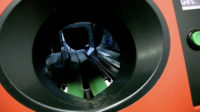Active and Intelligent Packaging as a Pathway to Sustainability

Image courtesy of GreenSeed
It’s hard to believe that 40% of food produced in the United States goes from “farm to fork to landfill*” What if packaging could reduce food waste so there was more food on the shelves and less food in the landfill.
Biotechnology is expected to play a major role in the future of food production, solving key pain points such as retaining nutritional integrity, increasing the shelf-life of packaged foodstuffs, and actively preventing food spoilage.
Traditional food packaging prevents food from coming into contact with environmental contaminants as it passes through the supply chain to the end consumer; it is, however, inert in that it doesn’t add value to what’s inside the package. Science, however, is changing this by opening the door for packaging to interact with food. Technology is playing a role as the supply chain is digitized and provides operational benefits that enable organizations to become more adaptable to market conditions. Digitizing also helps satisfy the market's need for transparency and simplifies regulatory compliance.
Changes in consumer preferences for more sustainable solutions are driving this trend.
In fact, according to the 2021 Global Buying Green Report, more than half of consumers (54%) consider sustainable packaging when choosing a product. Consumers younger than 44 years old are leading this change within that group 83% report that they are willing to pay more for sustainably produced products.
Active packaging (AI) and intelligent packaging (IP) both fall under the banner of Smart packaging: to protect nutritional value and preserve food quality for less spoilage and longer shelf-life. These systems can also monitor the quality status of a product and share the information with the customer. The trend towards sustainability, improved product safety, and high-quality standards are shifting the way food manufacturers produce and package their products. By leveraging AI and IP, food waste gets reduced, and customer satisfaction is optimized.
Today, consumers expect food processing techniques, including material technologies, to be sustainable, preserve the high quality of primary food and reduce additives. To fulfill these requirements, food packaging must meet the high-performance standards required to prevent contamination while ensuring re-use, recyclability, or biodegradability.
This next era of packaging as a partner to food is further underscored by its predicted growth: According to 360 Market Updates, the Smart packaging market is experiencing a rapid upward trajectory, projected to reach $68 billion by the end of 2025.
Active and Intelligent Packaging Developments for Sustainability
Sustainability has been the debate of the decade within the packaging industry. Smart packaging is crucial to addressing the critical challenges of sustainable food consumption. Food waste is a global environmental issue, particularly in industrialized countries that heavily depend on pre-packaged foodstuffs. According to the organization, Feeding America, more than 80% of Americans discard edible food because they misunderstand expiration labels.
An increase in the use of active and intelligent packaging can minimize the environmental footprint of packaged food. These packaging systems aim to address food waste by preserving food quality while addressing food safety issues such as the prevention of food-borne diseases and chemical contamination.
Moreover, Smart packaging systems have the potential to promote a circular bio-economy. Some solutions include the production of microbial biodegradable polymers primarily from agro-food waste. Such technology could prove promising in creating an innovative, considerably resilient, plus productive waste-based food packaging economy. Biodegradable packaging would significantly decouple the food packaging industry from the fossil fuel industry, minimizing its environmental impact.
Intelligent packaging can also incentivize consumers to recycle more. A case in point is the Deposit Return Scheme utilized in countries such as Germany, Norway, and Sweden. Consumers pay a small fee when they buy products using single-use plastics or cans and are refunded when they return the packaging and scan its barcode at a DRS machine.
Smart Packaging is the Future
Active and intelligent packaging is a promising part of our future. Smart packaging plays an important role in digitizing the food supply chain by promoting traceability with the added benefits of minimizing food waste and ensuring food safety. Also, digitizing the food chain secures food from production to consumption, minimizing the trade of counterfeiting foodstuffs.
Smart packaging solutions could shift the perception of the packaging industry, which is too often considered as an additional economic and environmental cost in the food supply chain rather than a process that brings potential added value to the food supply chain.
*According to the Natural Resources Defense Council.
Looking for a reprint of this article?
From high-res PDFs to custom plaques, order your copy today!






